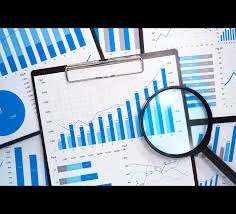In the fast-growing field of data analytics, many tools and platforms are available—from Python and R to Power BI and SQL. But even today, Microsoft Excel remains one of the most essential tools for data analysts, especially in entry-level roles or business environments where quick insights and reporting are required.
If you’re aspiring to become a data analyst or looking to strengthen your analytics resume, mastering Excel skills for data analyst jobs is not optional—it’s foundational.
Why Excel Still Matters for Data Analysts
Despite the rise of advanced tools and programming languages, Excel remains:
- Ubiquitous across industries
- Easy to learn yet powerful for analysis
- Ideal for small to medium-sized datasets
- A must-have skill for dashboards, KPIs, and business reporting
Hiring managers often list Excel proficiency as a core requirement for data analyst roles—especially in finance, marketing, operations, and HR departments.
✅ Core Excel Skills Every Data Analyst Should Master
1. Data Cleaning and Preparation
Before analysis begins, raw data must be cleaned. Excel offers powerful functions to do this efficiently.
Key functions:
TRIM(),CLEAN(): Remove unnecessary spaces and charactersTEXT TO COLUMNS: Split data into multiple columnsFIND()&REPLACE(): Identify and clean unwanted textRemove Duplicates&Sort: Organize data quickly
Data preparation can take up to 80% of the analyst’s time—Excel helps speed it up.
2. Formulas and Functions
Knowing how to apply formulas to automate and calculate data is essential.
Must-know functions:
IF()and nestedIFfor logical conditionsVLOOKUP()/XLOOKUP()for data matchingINDEX()+MATCH()for flexible lookupsSUMIF()/COUNTIF()/AVERAGEIF()for conditional calculationsTEXT()functions like LEFT(), RIGHT(), MID() to manipulate strings
Tip: Combine functions to create complex analysis formulas.
3. Pivot Tables
Pivot Tables allow analysts to summarize, sort, and filter large data sets without complex formulas.
Use Pivot Tables to:
- Generate dynamic summaries
- Compare categories and subcategories
- Quickly switch between dimensions
- Create interactive reports
Bonus: Learn how to group dates, use slicers, and refresh Pivot Tables automatically.
4. Charts and Data Visualization
Creating charts helps communicate insights visually, which is critical in data analyst roles.
Popular chart types:
- Bar/Column Charts for comparisons
- Line Charts for trends
- Pie Charts for proportions
- Combo Charts for dual-axis analysis
- Scatter Plots for correlations
Pro tips:
- Use sparklines for compact trends
- Apply conditional formatting to highlight key values
- Stick to clean, uncluttered visuals

5. Data Validation and Drop-Down Lists
Data validation helps maintain accuracy in data entry.
Common uses:
- Create drop-down menus to restrict entries
- Set input limits (e.g., dates, numbers)
- Reduce errors in shared spreadsheets
This is especially useful when building dashboards or templates for business users.
6. What-If Analysis
Excel’s built-in What-If Analysis tools help forecast and simulate outcomes.
Key tools:
- Goal Seek: Adjust one input to meet a desired output
- Scenario Manager: Test different input combinations
- Data Tables: Analyze how changing inputs affect results
These tools are perfect for financial modeling and forecasting.
7. Power Query (Get & Transform)
Power Query allows for advanced data transformation without coding.
Use Power Query to:
- Merge and clean data from multiple sources
- Automate repetitive tasks
- Perform joins, pivots, and unpivots
- Connect to external databases or web sources
Power Query brings the ETL (Extract, Transform, Load) process to Excel.
8. Power Pivot and DAX
Power Pivot extends Excel’s analytical capabilities by allowing users to work with large datasets and relationships.
What to learn:
- Build data models with relationships
- Create calculated columns and measures
- Use DAX (Data Analysis Expressions) for advanced calculations
Mastering Power Pivot bridges the gap between Excel and Power BI.
9. Macros and VBA (for automation)
If you need to automate repetitive tasks, learning basic macros and VBA (Visual Basic for Applications) can save time.
Common uses:
- Auto-generate reports
- Clean or reformat data automatically
- Build interactive tools or calculators
VBA is an advanced skill—not required for every analyst, but highly valued in reporting-heavy roles.
10. Excel for Dashboarding
Data analysts often create dashboards that update dynamically with fresh data.
Build dashboards using:
- Pivot Charts + Slicers
- Dynamic Named Ranges
- Drop-down filters
- Conditional formatting
- Interactive charts
Excel dashboards are often used by executives for decision-making.
🧠 Bonus Soft Skills to Accompany Excel Skills
While technical proficiency is important, soft skills enhance your value as a data analyst:
- Analytical thinking: To interpret data and draw insights
- Attention to detail: Essential for data accuracy
- Communication: To present findings clearly
- Curiosity: For identifying trends and asking the right questions
- Collaboration: Excel files are often shared, so working well in teams is key
📈 How to Learn and Practice Excel for Data Analyst Jobs
📚 Online Courses
- Excel Skills for Business – Coursera (Macquarie University)
- Excel for Everyone: Data Management – edX (University of British Columbia)
- Excel to MySQL: Data Analyst Path – Udacity
- LinkedIn Learning Excel Paths
💼 Real-World Projects to Practice
- Budget tracking tools
- Sales performance dashboard
- Inventory management templates
- Survey data analysis
- Financial forecasting sheets
🧾 Resume Tips: How to List Excel Skills
Good Example:
Technical Skills:
- Excel (Pivot Tables, VLOOKUP, Power Query, Dashboards)
- SQL, Tableau, Python (Pandas, Matplotlib)
Also, include Excel in project descriptions:
“Built an Excel-based dashboard that visualized customer churn by region and product type using Pivot Charts and data validation.”
🔚 Conclusion: Excel Is Still a Power Tool for Data Analysts
While modern data analytics may lean into Python, SQL, and cloud platforms, Excel remains a critical tool—especially in the early stages of a data analyst’s career. From data cleaning and analysis to dashboards and automation, Excel skills for data analyst jobs are not just relevant—they’re expected.
By investing time into mastering Excel, you’ll not only ace job interviews but also gain the practical skills to deliver insights, solve problems, and grow within any data-driven organization.

